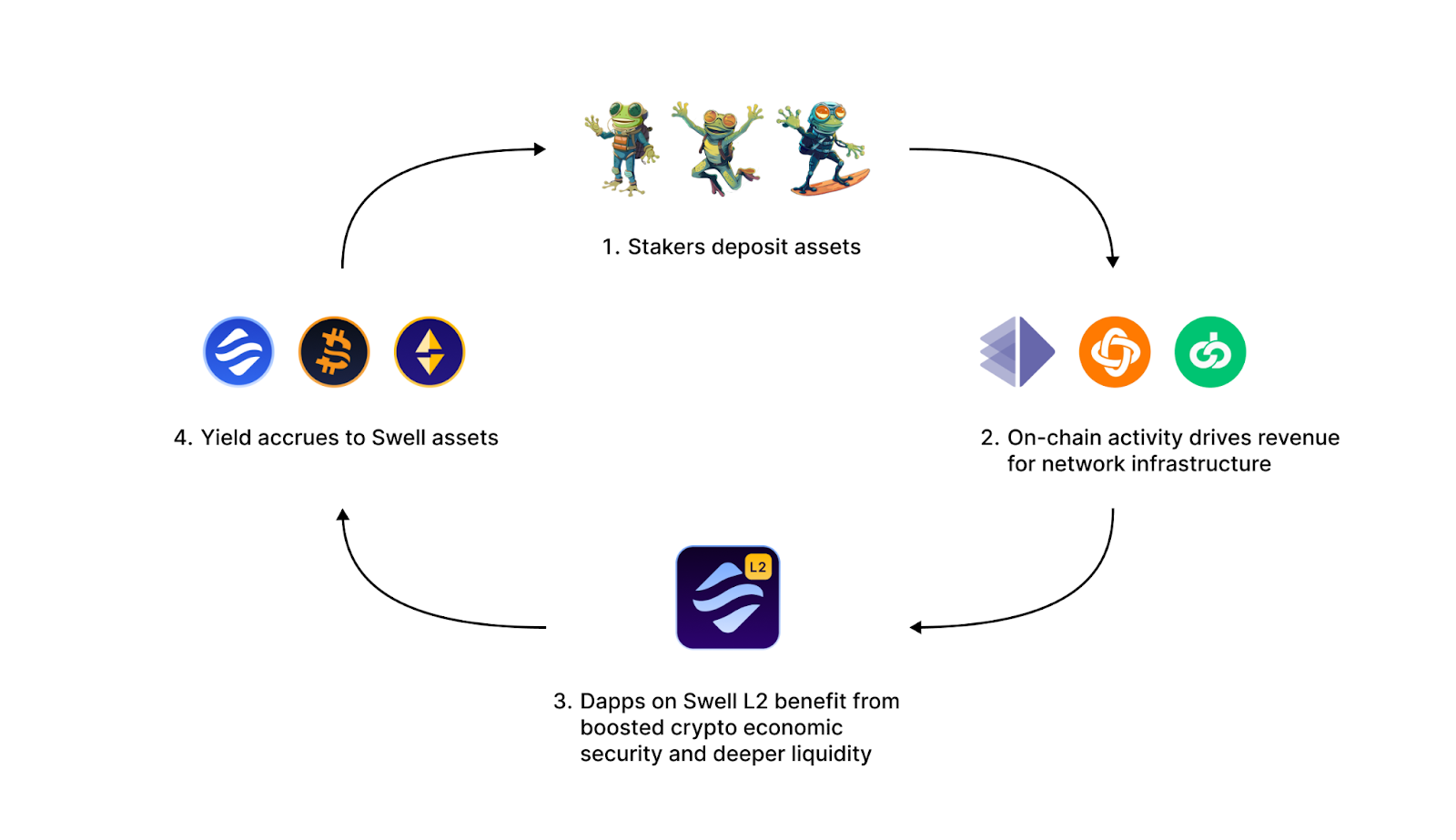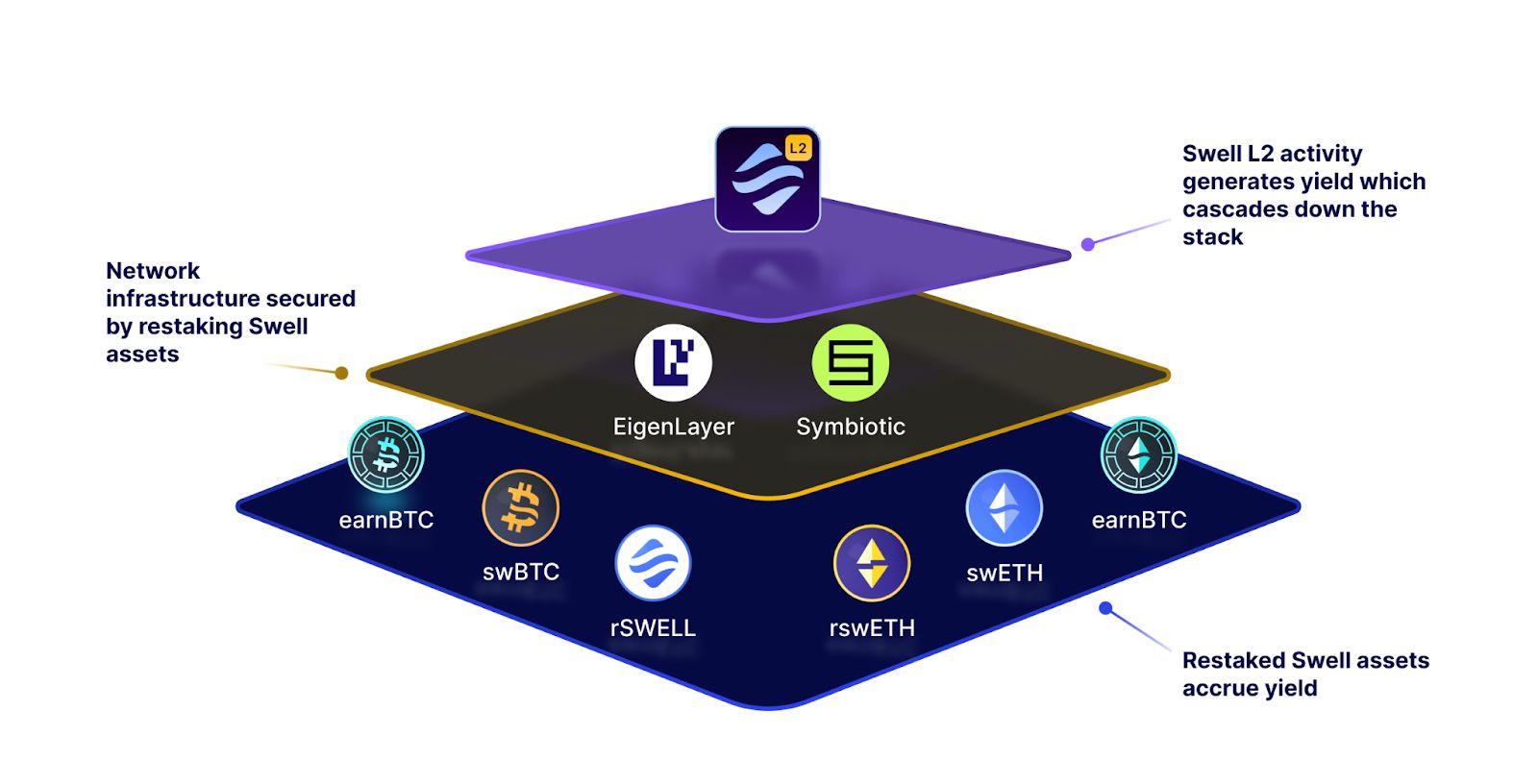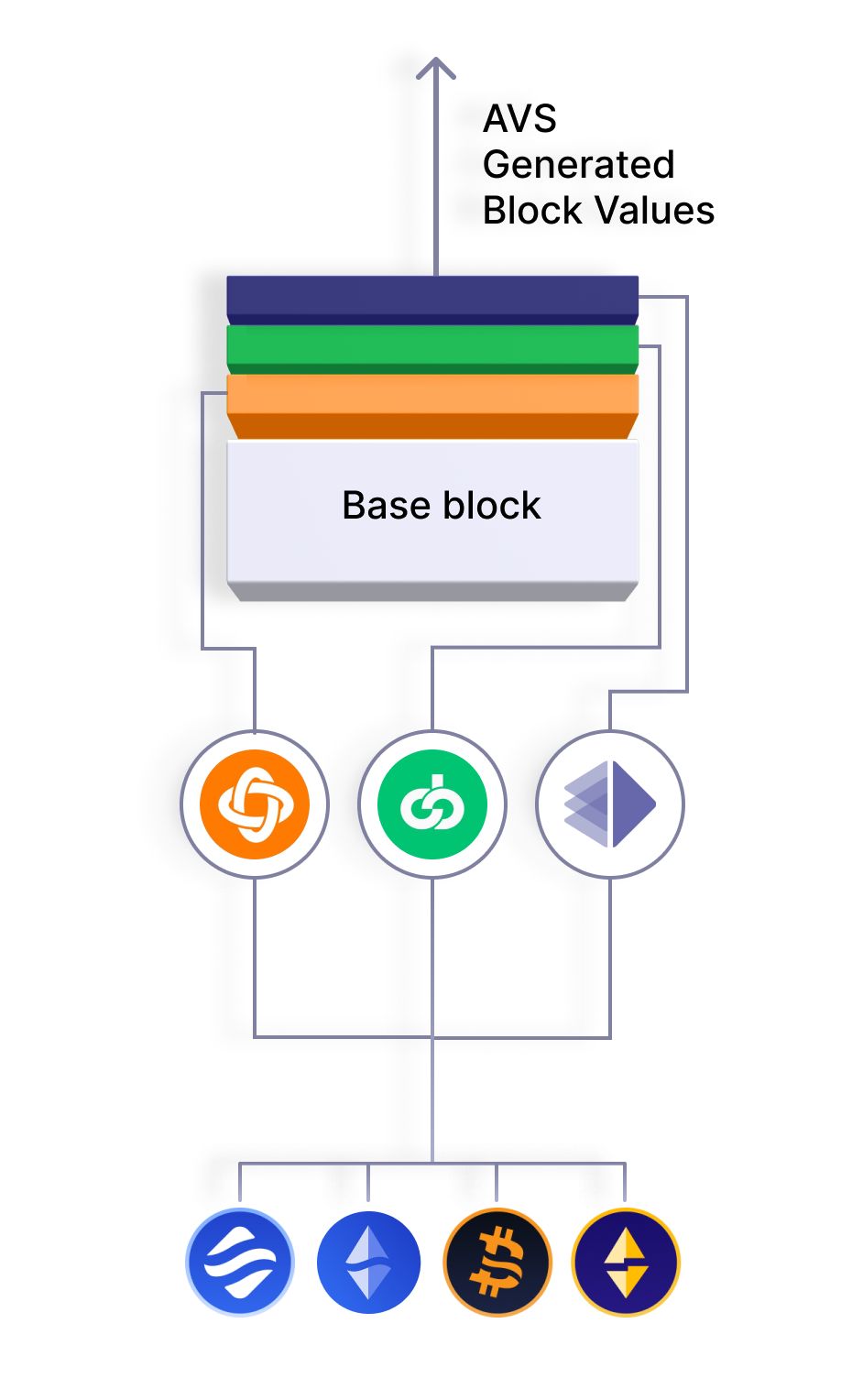Proof of Restake: The Pioneering Mechanism Underpinning Swell L2
How Proof of Restake will maximize the capital efficiency of staked assets and sets a unique flywheel in motion.
Swell L2, the restaking yield layer, is scaled and decentralized with infrastructure secured by restaking.
This will enable the network to overcome the key challenges faced by existing L2s — including scarce liquidity, centralization, and lack of native yield — to drive value creation to new heights.
At the core of this network architecture is a pioneering new mechanism: Proof of Restake.
Introducing Proof of Restake (PoR)
Swell’s Proof of Restake is designed to maximize the utility of staked assets within and beyond Swell’s L2 ecosystem. The mechanism will use liquid restaked assets to secure the infrastructure providing key services to the rollup, which in turn secure the chain.
This maximises the utility and capital efficiency yield of staked assets, makes the community of users direct recipients of the value created on-chain, and sets a flywheel in motion which drives network growth, enhances security, and expands liquidity throughout the ecosystem.
Proof of Restake in motion
Swell L2 will integrate PoR to create a vertically aligned and secure ecosystem, in which staked assets are efficiently reused across multiple layers and chains, and the incentives of all network participants — including validators, node operators, builders, and users — are pulled into alignment.

1. Stakers deposit assets
Assets staked in Swell are tokenized into liquid restaked tokens (LRTs). These tokens accrue staking rewards while remaining liquid for deployment across infrastructure services, DeFi applications, and cross-chain protocols. Thus stakers can simultaneously secure Swell’s infrastructure while still being able to participate in the ecosystem.
2. On-chain activity drives revenue for network infrastructure and services
Restaked assets secure key infrastructure services within the Swell L2 ecosystem, including the validators, relayers, node operators and sequencers that maintain the integrity and functionality of the network. In turn, these services support the network and charge fees.
3. Yield accrues to Swell assets
Revenue generated by chain-specific AVS infrastructure on Swell L2 — through transaction fees, sequencer fees, and more — cascades down the stack to become native restaking yield for holders of Swell assets.
4. Liquidity deepens and security increases
As more assets are deposited and activity on the network builds, dApps benefit from boosted crypto economic security and deeper liquidity — creating a better environment for DeFi and attracting more builders and users.

Why Proof of Restake?
Integrating PoR will give Swell L2 the characteristics needed to overcome the problems faced by existing L2s, and deliver the best experience for builders, node operators, and users.
Modularity
With each network function fulfilled by modular and interchangeable AVS and networks, Swell L2 core infrastructure can be adapted and upgraded — making the network lean, agile, and progressively more decentralized and performant over time.
Ethereum alignment
Restaked assets are used to secure key infrastructure components within the network, ensuring that it remains rooted firmly in the security of Ethereum. This helps avoid the multitude of issues — including censorship, single points of failure, and downtime — that stem from the use of centralized infrastructure such as sequencers.
Maximal asset productivity
Proof of Restake makes Swell L2 users direct recipients of the value their activity creates. Revenue generated by activity on the network — through transaction fees, sequencer fees, and more — cascades down the stack to become native restaking yield for holders of Swell assets. In this way, PoR empowers users to maximize their asset productivity while still contributing to the long-term growth and sustainability of the network.
More DeFi innovation
Building on liquid restaked assets enables dApps to access new liquidity sources that would otherwise be locked in traditional staking mechanisms. In addition, dApps on Swell L2 can innovate by plugging into infrastructure services — including Zk-coprocessors, decentralized automation, and security protocols — that enable new possibilities for innovation outside the constraints of the EVM, but still firmly rooted in the security of Ethereum.
Beyond Swell L2

Rollups are currently developing in groups or clusters based on shared parts of their stack.
Proof of Restake enables a new approach in which these interconnected rollups can inherit the security of other chains in the broader network.
Blockspace is scaled by delegating consensus to Ethereum and parallelizing the creation of block value to specialized networks secured by a shared set of Swell assets.
This lowers the barrier to entry for new chains, with each new specialized rollup joining a system of rollups secured by the same set of robust assets, serviced for sequencing, verification and finality needs by a shared decentralized infrastructure set, and benefiting from pooled native restaking yield.
In this way, Proof of Restake enables the propagation of a collective of rollups positioned at the leading edge of Ethereum scalability.
Stay tuned for more news on the upcoming launch of Swell L2!
Disclaimer: The content of this article solely reflects the author's opinion and does not represent the platform in any capacity. This article is not intended to serve as a reference for making investment decisions.
You may also like
TANSSIUSDT now launched for futures trading and trading bots
MUSDT now launched for futures trading and trading bots
Notice: VND deposit and withdrawal services Back to Normal
CROSSUSDT now launched for futures trading and trading bots
